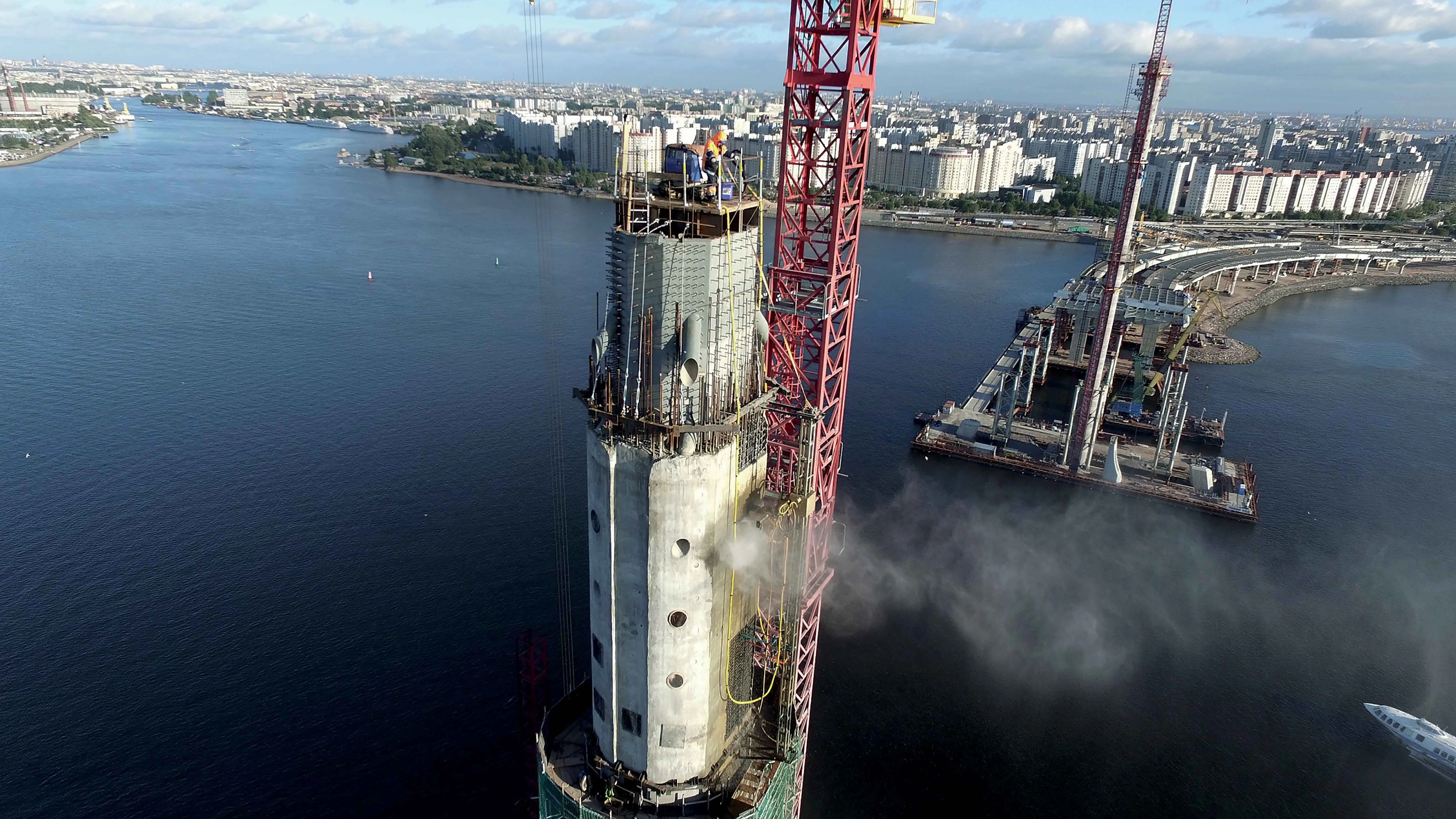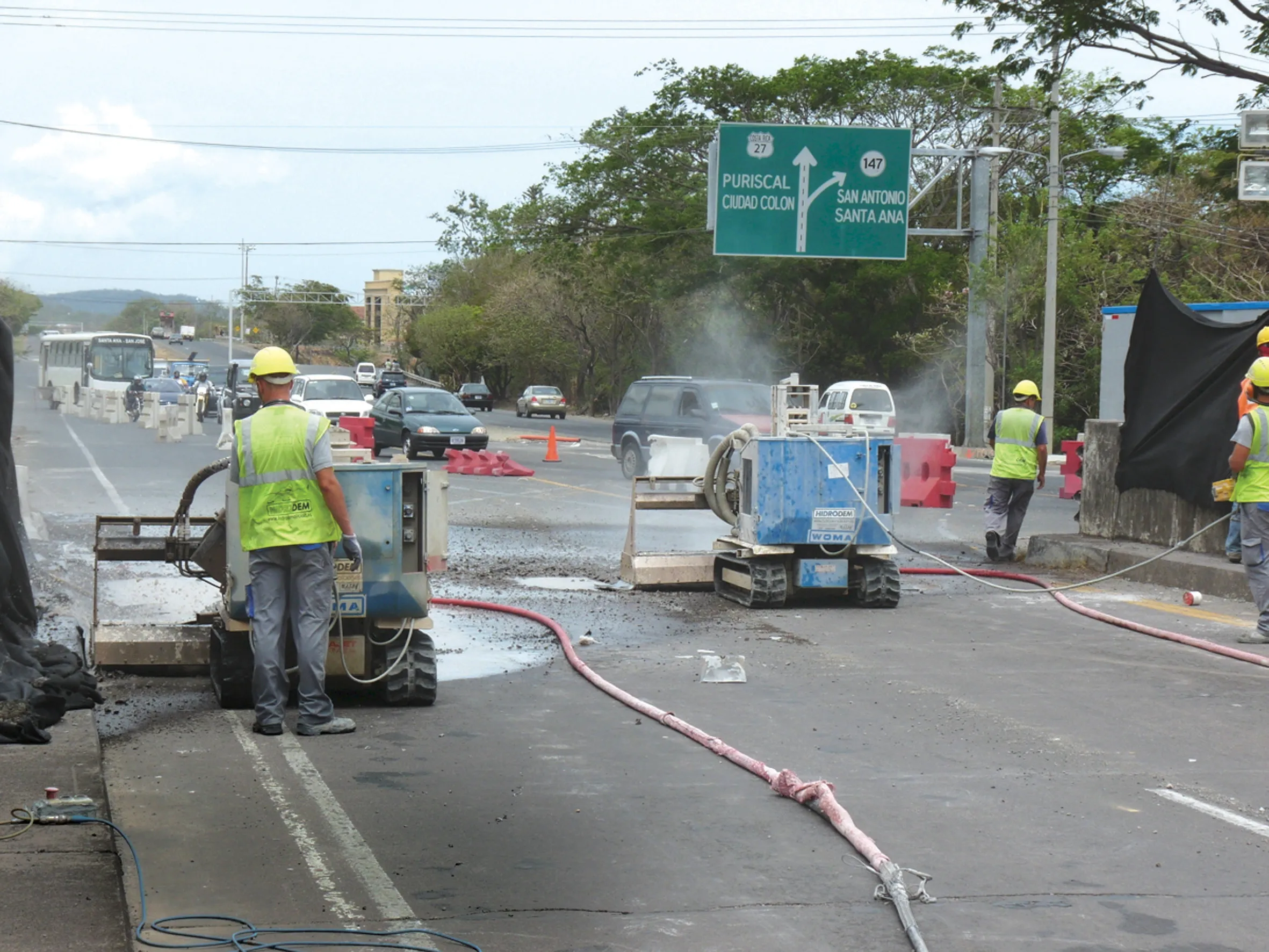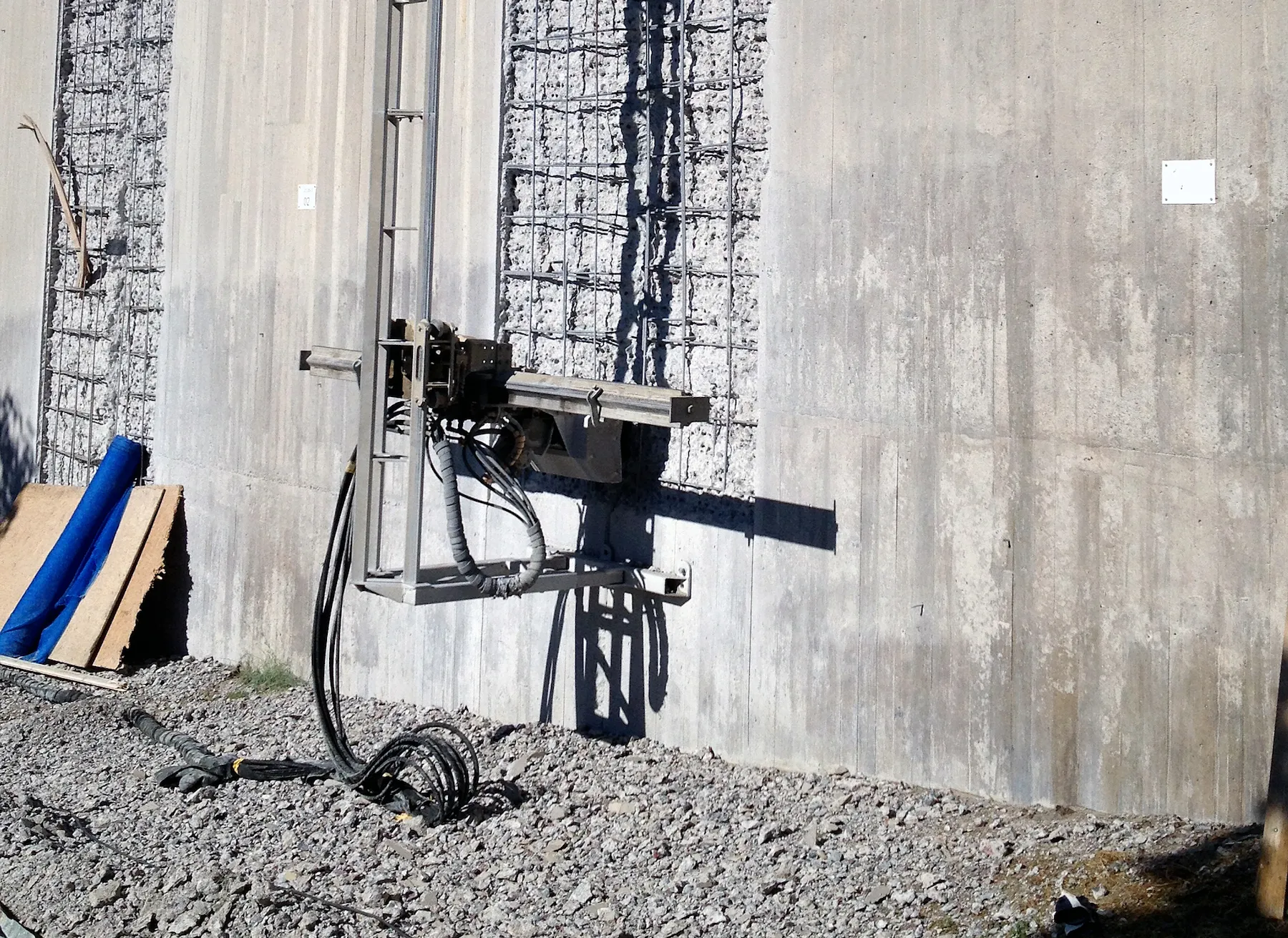Contractor ICA Construction used two Aquajet robotic hydrodemolition machines at the top of a 120m-high bridge pylon located in the city of St Petersburg. The two Aquajet robotic water cutters were used to remove surplus concrete from around the inner steel structure of the bridge pylon. This link spans the River Neva and forms part of the Western High-Speed Diameter (WHSD) route in St Petersburg.
The WHSD is a highly important route for the region and will provide a key connection between the Scandinavi
June 20, 2016
Read time: 4 mins

Special equipment has been used to remove concrete from the top of a bridge pylon
Contractor2765 ICA Construction used two 2784 Aquajet robotic hydrodemolition machines at the top of a 120m-high bridge pylon located in the city of St Petersburg. The two Aquajet robotic water cutters were used to remove surplus concrete from around the inner steel structure of the bridge pylon. This link spans the River Neva and forms part of the Western High-Speed Diameter (WHSD) route in St Petersburg.
The WHSD is a highly important route for the region and will provide a key connection between the Scandinavian Peninsula, Continental Europe, Central Russia, and the Baltic States.
Turkish-Italian company ICA Construction is building an 11.57km section of the highway under a US$1.6 billion contract over a four-year construction schedule. This programme of works also includes building three major high-level bridges, together with low-level viaducts and smaller overbridges.
One of the crossings is the Petrovsky Fairway Bridge, a 560m cable-stayed structure that spans the River Neva and links two islands. The structure has been designed to cut the journey time from over one hour to between 10 and 15 minutes.
The Petrovsky Fairway Bridge is being built with two needle-shaped towers, each 120m-high. The deck is being supported by cables arranged in four planes. The cables supporting the deck units closest to the tower will be connected to the top of the tower, with those towards the mid span connected at a lower level. The length of the central span is 240m, and the bridge under-clearance is 25m.
On the northern pier ICA brought in the two Aquajet hydrodemolition robots to cut away surplus concrete from near the top of the pylon. The robot machines were rented by Termite, a hydrodemolition specialist that is a sister company to DUS, distributor for Sweden’s Aquajet Systems AS in Finland and Russia. The height of the concrete to be removed was 10m, so Termite assembled the Aqua Spine unit to the same length. The firm assembled the complete system on the ground, reducing the set up time.
The 10m-high Aqua Spine mast was lifted in place and bolted onto each side of the pylon. An Aqua Cutter 410A was used as the Power Control Unit to control the Aqua spine. ICA wanted to remove the concrete without causing any damage to the inner steel structure, and needed to save the vertical rebar to spend less time on recasting. Termite provided the two water cutters to ICA, together with operators and service backup, on a rental basis.
The diamter of the inner steel structure of the pylon varies between 3.5m and 4.4m. The wider sides of the pylon are covered by 55cm of concrete, while the narrow sides have a variable thickness of between 50cm and 75cm.
The concrete that had to be removed was at a height of 84.5-94.5m, and the full thickness that had to be removed was about 77m³. To carry out the work Termite placed the power pack at the bottom of the pylon and used a 120m long high-pressure hose to access the working area. The hose was fed upwards inside the pylon and then through a vent hole to the outside.
The water source was the Finnish Gulf and the firm used three-level filtration to prepare water for the plunger pump, the used water was fed back into the sea. A caisson wall filled with sand and crushed stone surrounds the pylon. This acted as a filtration and settling tank, so the water that was pumped back into the Gulf was almost entirely clean.
The advantages of this method for ICA, along with the clean cutting of the concrete, was that there was no need to have a large gang of jackhammer operators working high up on the pylon or any need to build any platforms or scaffolding.
Contractor
The WHSD is a highly important route for the region and will provide a key connection between the Scandinavian Peninsula, Continental Europe, Central Russia, and the Baltic States.
Turkish-Italian company ICA Construction is building an 11.57km section of the highway under a US$1.6 billion contract over a four-year construction schedule. This programme of works also includes building three major high-level bridges, together with low-level viaducts and smaller overbridges.
One of the crossings is the Petrovsky Fairway Bridge, a 560m cable-stayed structure that spans the River Neva and links two islands. The structure has been designed to cut the journey time from over one hour to between 10 and 15 minutes.
The Petrovsky Fairway Bridge is being built with two needle-shaped towers, each 120m-high. The deck is being supported by cables arranged in four planes. The cables supporting the deck units closest to the tower will be connected to the top of the tower, with those towards the mid span connected at a lower level. The length of the central span is 240m, and the bridge under-clearance is 25m.
On the northern pier ICA brought in the two Aquajet hydrodemolition robots to cut away surplus concrete from near the top of the pylon. The robot machines were rented by Termite, a hydrodemolition specialist that is a sister company to DUS, distributor for Sweden’s Aquajet Systems AS in Finland and Russia. The height of the concrete to be removed was 10m, so Termite assembled the Aqua Spine unit to the same length. The firm assembled the complete system on the ground, reducing the set up time.
The 10m-high Aqua Spine mast was lifted in place and bolted onto each side of the pylon. An Aqua Cutter 410A was used as the Power Control Unit to control the Aqua spine. ICA wanted to remove the concrete without causing any damage to the inner steel structure, and needed to save the vertical rebar to spend less time on recasting. Termite provided the two water cutters to ICA, together with operators and service backup, on a rental basis.
The diamter of the inner steel structure of the pylon varies between 3.5m and 4.4m. The wider sides of the pylon are covered by 55cm of concrete, while the narrow sides have a variable thickness of between 50cm and 75cm.
The concrete that had to be removed was at a height of 84.5-94.5m, and the full thickness that had to be removed was about 77m³. To carry out the work Termite placed the power pack at the bottom of the pylon and used a 120m long high-pressure hose to access the working area. The hose was fed upwards inside the pylon and then through a vent hole to the outside.
The water source was the Finnish Gulf and the firm used three-level filtration to prepare water for the plunger pump, the used water was fed back into the sea. A caisson wall filled with sand and crushed stone surrounds the pylon. This acted as a filtration and settling tank, so the water that was pumped back into the Gulf was almost entirely clean.
The advantages of this method for ICA, along with the clean cutting of the concrete, was that there was no need to have a large gang of jackhammer operators working high up on the pylon or any need to build any platforms or scaffolding.








